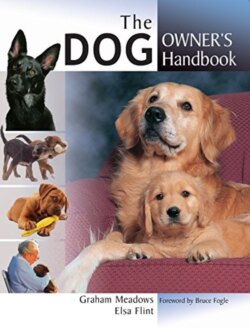Читать книгу The Dog Owner's Handbook - Graham Meadows - Страница 15
На сайте Литреса книга снята с продажи.
The arrival of the ‘pet’ dog
ОглавлениеAs time went by, more types of dog were developed. Dogs that could hunt by both sight and scent proved useful as all-purpose hunters, and from them were developed the smaller ’earth’ dogs, now known as terriers. Their name comes from the word ’terra’, Latin for earth. They were short-legged, tough and hardy, expert at detecting and catching smaller quarry and an invaluable aid in keeping down the vermin that thrived in most areas of human habitation.
Dogs required for herding cattle and sheep needed to be agile and intelligent, and retain many of the characteristics of their wolf ancestors, who performed similar tasks during a hunt when singling out the weaker animals.
Larger and heavier Mastiff-type dogs were developed to pull loads, protect herds and flocks from dangerous predators such as wild bears or wolves, or guard property against both animals and humans.
The bond that exists between most of today’s owners and their dogs is not new. Two thousand years ago a shepherd in Turkey probably had similar feelings about his working dog as a British, American or Australian farmer does today. But while many people would have felt the need for a dog’s companionship in those early days, few could have afforded to keep and feed a dog that did not work for its living.
Pet dogs were largely the province of the wealthy. In China and Japan, ‘toy’ dogs were kept by the emperors and their courts, and it was only when European travellers began to visit those countries that many of the breeds were ’discovered’ and brought back to Europe and England. By AD 500 the Bichon family of dogs was established, giving rise to today’s Bichon Frise and possibly the Lowchen. Various types of small dog were also developed in monasteries, where their roles ranged from companion to watchdog.
One of the world’s most popular dogs, the Pointer was originally bred as a hunting companion due to its excellent sight and sense of smell, coupled with intelligence and a keen ability to learn.
With the passing of the centuries, more of today’s breeds took shape. In AD 1300 the Black Hound, forerunner of the Bloodhound, was established in Britain, while in Europe and Asia herding dogs were developing – among them the ancestors of the Hungarian Puli and Komondor.
Perhaps as many as three-quarters of today’s dog breeds were developed during the last 300 years or so. Improvement in the range and accuracy of firearms resulted in the introduction and refinement of many of today’s gun-dog breeds, while increased affluence led to more interest in general purpose and toy dogs.
By the beginning of the 20th century the development was almost complete, and most of the refinements since then have been cosmetic rather than functional.
